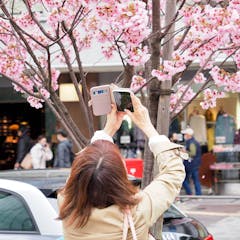
Articles on Photographs
Displaying 1 - 20 of 24 articles

Through their media savvy, two consultants were able to make the Oscars as much about the attire as the gold statuettes.

Image of the majestic creatures remain powerful communicators of humanity’s connection with nature.

During the pandemic, few of our life events felt worthy of a single Instagram post, inspiring users to celebrate the beauty in mundanity with ‘dumps’.

A World in Common is a European exhibition with African content, rather than a space that invites conversations and engagement that go beyond the images themselves.

While Lewis Hine’s early-20th century photographs of working children compelled Congress to limit or ban child labor, the US Department of Labor is now under fire for failing to enforce these laws.

Publicly available data on social media opens a new avenue for studying the environment with “incidental citizen science”.

Yevonde was a celebrated portraitist, innovative colourist and advocate for women in the profession. In short, a pioneer.

A new photo taken on the Artemis I mission shows Earth isn’t a sealed spaceship, but is in dynamic interchange with the cosmos.

Holocaust scholars long relied on documents and survivor testimonies to help reconstruct the history of that tragic event. Now, they’re turning to wordless witnesses to learn more: pictures.

Alternative beliefs like spiritualism seem to experience resurgences in times of crisis. Taggart has spent the past 20 years exploring the oft-misunderstood religion.

As American troops leave Afghanistan, a scholar of the country’s history and culture reexamines his photos of the nation’s people.

Researchers found women and men use their camera rolls differently - and our visual values have changed.

From Madonna and child to fierce matriarch, mothers have appeared in frame since photography began – even it sometimes they are just part of the furniture.

Images without context or presented with text that misrepresents what they show can be a powerful tool of misinformation, especially since photos make statements seem more believable.

To untangle the relationship between climate change, fall foliage and national park visitors, researchers are asking tourists to check their old photo albums for snapshots that could hold valuable data.

People fall for fake photos regardless of whether they seem to come from Facebook or The New York Times. What actually helps?

Parents have engaged in forms of ‘sharenting’ for generations. The digital age has complicated things, but while critics make some valid points, they’re not seeing the forest for the trees.

Photographs can influence us – they can inspire us to act and they can also impact the way we think about issues. The recent published photos about the migrant ‘caravan’ convey several stereotypes.

Marginalised Namibians should be encouraged to take up cameras to document their lives – on their own terms.

According to a photojournalism expert, there can be a relationship between exposure to grisly images and activism. But there are also ethical considerations to be made.

